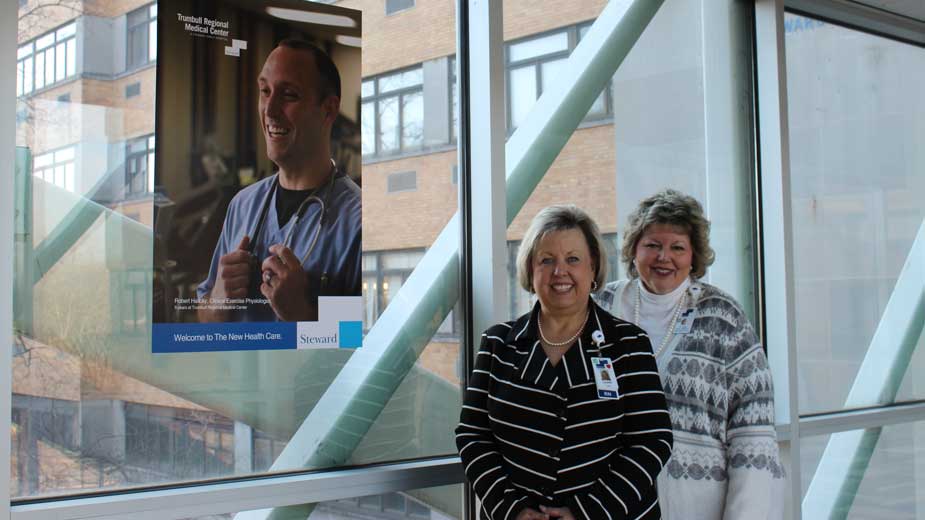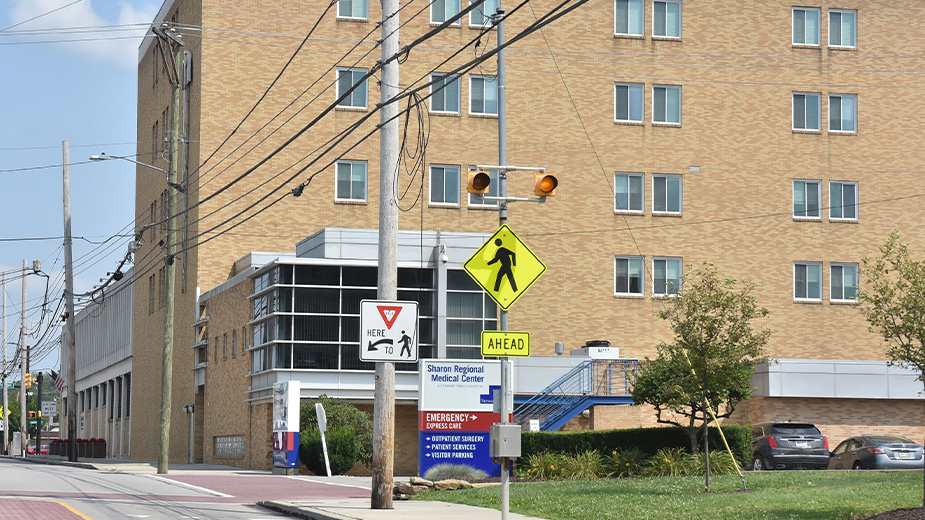Resident Physicians Help Hospitals Prepare for Future
YOUNGSTOWN, Ohio — Although they don’t have the full autonomy of seasoned doctors, resident physicians at area hospitals are an important part of the medical ecosystem. And with a looming shortage of doctors, they’re a coveted resource who can secure high standards of care long down the road.
“First and foremost, there’s an advantage to patient care. They have 24/7 access to physician specialties. Our residents work around the clock,” says Dr. Kimberly Howe, director of Western Reserve Health Education. “They’re the eyes and ears and they’re readily accessible to our nursing staff.”
Western Reserve Health Education, an arm of Steward Health Care sites in the area, coordinates medical education at Trumbull Regional Medical Center, Hillside Rehabilitation Hospital and Sharon Regional Medical Center. With roots going back to the creation of a nursing school at Trumbull Regional in 1902, it is today affiliated with Northeast Ohio Medical University, which considers it a “major teaching hospital,” Howe says.
Without a hospital of its own, the university sends students out to learn at sites throughout the region. The first two years of their education are “basic science years,” Howe says, before they start learning in hospitals.
“The third and fourth years are their clinical years and that’s when they come to the hospital. Third year is the rotations they have to have,” including internal medicine, family medicine, emergency medicine, surgery, psychiatry and OB-GYN care, she says.
From there, they select a specialty and are matched with hospitals for their residencies upon obtaining their medical degrees. How long they stay at the hospital varies depending on their field. An internal medicine residency can be completed in three years, while a surgical residency can take five.
“They perform direct patient care, but always under the supervision of one of our credentialed faculty members. They do everything,” says Dr. Ronald Rhodes, academic director for Mercy Health-Youngstown. “They take care of patients, see patients in our emergency room, participate in emergency resuscitation, perform surgeries with an associated practitioner, see patients in an ambulatory setting.”
Those years of clinical education are crucial to creating new doctors, Howe and Rhodes say. In classrooms, medical students are working among their peers. But in hospitals, they work as part of a constantly churning machine with a cast of nurses, aides, patients and other doctors. The only way to learn the skills necessary to navigate that world is to be part of it, they say.
“No one works in isolation. It’s an important part of their education to work in teams. It’s a critical piece,” adds Laurie Barber, chief nursing officer at Trumbull Regional. “When you see them rounding on the floor, you’ll see them with nurses, pharmacists, therapists and the attending physician. They’re all talking about the patient. Everybody brings something special to the table.”
And with a looming shortage of doctors, getting young medical professionals ingrained in a hospital’s inner workings is a crucial task for administrators. The Association of American Colleges forecasts a shortage of up to 120,000 doctors nationwide by 2030, a figure that includes a shortage of up to 49,300 primary-care physicians. That shadow looms large locally, Howe says, noting that median age of doctors at Trumbull Regional is around 60.
“Having them in our area, we want them to stay here. And they feel comfortable because they know the nurses, the administrators,” she says. “They want to stay past their graduation. They want to hang their shingle in the place where they got the opportunity to become a board-certified physician.”
It’s a similar situation at Mercy Health, according to Rhodes.
“They get exposed to our community. Some of the trainees in our program are from this area, want to stay here and are introduced to this system,” he says. “Because of doing their training here, our benefit is they like it here, they think we’re doing a good job and they go into practice with us.”
In June, St. Elizabeth Boardman Hospital graduated its first class of residents – 10 doctors of emergency and family medicine – and another 45 are there now studying those two specialties, as well as otolaryngology.
“That’s a continued renewable resource for new practitioners. The more physicians we’re able to produce, or at least train and credential, that certainly will help,” he says.
Beyond just having doctors ready, residency programs can help improve patient care. Whereas doctors may not always be on-site, there are residents working at the hospitals around the clock, Barber says.
“What’s really a comfort to the nurses is that, before, physicians were a phone call away. Now, many times they’re right there at the nursing station,” she says. “If you have a patient going into distress, the residents are all around. It’s a quick response. It took [the nurses] some time to get used to it because they’d come in droves. They all wanted to learn.”
Just like seasoned doctors, residents are involved in discussions about patient care, Barber says.
“We’re trying to involve them in the quality-care process that we’re trying to drive. They need to understand from the ground up how to deliver that care according to the standards that are set,” she says. “They need to be out there thinking ‘What can we do?’ ”
As the medical field becomes more entwined with technology, an influx of younger doctors means that tech is being used more often, which can lead to better health outcomes.
“These are people in training. They’re very much on the ball with the latest technology questions or the latest medication questions. It makes the practitioners, their faculty, their supervisors stay more on the ball as well,” Rhodes says.
Pictured: Trumbull Regional Medical Center chief nursing officer Laurie Barber and Western Reserve Health Education director Dr. Kimberly Howe say having residents at the hospital means faster response times and better health outcomes.
Copyright 2024 The Business Journal, Youngstown, Ohio.



